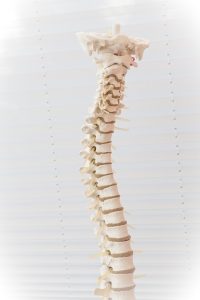What is Ankylosing Spondylitis?
Ankylosing Spondylitis is a condition marked by inflammation in the joints and ligaments of the spine. This inflammation can cause stiffness and make bending and/or twisting difficult. In severe cases of ankylosing spondylitis, the bones in the spine can actually fuse together. When adjacent vertebrae fuse the joint between them can no longer move, further limiting the individual’s movements.
Symptoms
 Ankylosing spondylitis (AS) often causes pain and/or stiffness in the lower back. The symptoms may come and go and can vary in intensity. Pain may worsen during periods of rest and improve with exercise or activity.
Ankylosing spondylitis (AS) often causes pain and/or stiffness in the lower back. The symptoms may come and go and can vary in intensity. Pain may worsen during periods of rest and improve with exercise or activity.
AS can also lead to a narrowing of the spinal canal, called spinal stenosis. This narrowing can result in pinching of the spinal cord or spinal nerves and result in shooting pains and/or weakness in the extremities.
Who is at Risk?
There is a genetic factor to ankylosing spondylitis, meaning if individuals in your family have the condition, you’re more likely to develop it. Men are more likely to develop it than women, and individuals with Crohn’s disease or ulcerative colitis may be more prone to developing the condition.
Treatment
There is no cure for ankylosing spondylitis. Treatment usually focuses on reducing the individual’s pain during “flare ups”. This can include medications, physical therapy, steroid injections, or chiropractic treatment. In extreme cases surgery may be recommended.
References
- https://www.niams.nih.gov/health-topics/ankylosing-spondylitis
- https://www.verywellhealth.com/ankylosing-spondylitis-and-spinal-stenosis-5322836
